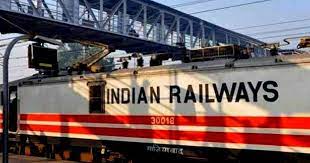Railways safety nosedives!
By M.Y.Siddiqui
Indian Railways safety has taken a big hit with the June 2, 2023 horrendous Odissa triple train accidents. Budgetary allocations for safety of rail services have come down drastically since 2014. Commensurate with that massive vacancies in Indian Railways have plagued rail safety. RSS Pariwar union government’s initial covert ploy through captive mainstream media to blame the triple train accidents with deaths of approximately 300 people and injuries of over 1000 passengers on the joint conspiracy of Imam (head priest) of nearby make-believe mosque (factually it is an ISKCON temple) and a non-existent Muslim station master who, in fact, is a Hindu, to trigger the accidents in a typical Sangh Pariwar government’s efforts to deflect public attention from main issues like growing unemployment, high costs of living and growing communal, social, religious fissures for their electoral gains. Yet when one looks at the safety records of Indian Railways, one finds myriad improvements in technology up gradation, rail infrastructure and modernization of coaches, wagons and locomotives for an overall safer train services to the nation. Budget allocations for railways generally have also gone up year on year since Indian economy was globalized in 1991.
Despite that, other factors relevant to train accidents are massive vacancies of manpower to the tune of nearly 400,000 accumulated since 2014, majority of them in the frontline staff of safety segments like track renewals, track monitoring, signaling, telecommunications, maintenance works, operational staff, rolling stock etc., all symptomatic of demoralized, demotivated and overstretched employees from top to bottom and the allocated budgets not being spent as targeted. After all, it is manpower behind machines/technology that matters the most, not the technology per se.
Added to this, Ministry of Railways normally plays truant in juggling safety data, accidents investigations, its findings and implementations. Entire manpower of the Railway Safety Commission right from the Chief Commissioner of Railway Safety to all the nine zonal Railway Safety Commissioners, though ostensibly administered tactically by the Ministry of Civil Aviation to hoodwink the people that the Railway Safety Commission is independent and impartial, belong to the Ministry of Railways. All personnel heading Railway Safety Commission right from Chief Commissioner to Commissioners are senior civil engineers of Indian Railways. However, Railway Board maintains that 90 percent of recommendations are accepted and implemented generally. Besides, a Commissioner of Railway Safety report in serious accidents involving very high casualties takes six months and more to conclude. Final reports in serious cases of accidents even take years.
As for the non-Railway Safety Commissioner inquiry reports into derailments of trains, there are 22 percent delays in starting the inquiry, delay in submission of report on such inquiry is 63 percent and delay in accepting the inquiry report is 49 percent based on analysis of 854 derailment cases from 2013-14 to 2020-21 by the CAG. Derailments are the most common causes of train accidents. A 2022 report by the Comptroller and Auditor General (CAG) that audited 1,129 derailment inquiries from 2017 to 2021 attributed 422 cases to the civil engineering department, with poor maintenance of tracks 171 cases being the most common reason. The CAG observed that track inspections were not frequent. The report concluded “deficiencies in setting up a foolproof system of learning from past mistakes restricted railways’ ability to prevent derailments”. A government white paper in 2015 recommended annual renewal of 4,500 kilometres of tracks to reduce considerably derailments, which are not happening and the targets set year on year fall short.
In 2017-18 when Railway Budget was merged with the General Budget, the government created a special railway safety fund that was named in a typical Hindi-ised version as Rashtrya Rail Suraksha Kosh with a corpus of Rs.20, 000 crore annually for a period of five years, which failed to achieve the targets. In fact, earlier during Atal Behari Vajpayee government, a Special Railway Safety Fund with an estimated sum of Rs.17, 000 crore was created and to mobilise that sum a surcharge of 5 paise per passenger was levied. Such funds, however, remained underutilized and not spent fully on safety related
works of track renewals, signaling and telecommunications and modernizing rolling stocks. Budgetary allocation on special safety in 2023-24 is Rs.10, 000 crore against the requirement of Rs.20, 000 crore as per the white paper. Yet another reason of integration of railway budget with the general budget has taken sheen out of railways. Railways are no longer in public gauge except during serious train accidents. It has lost dedicated focused public attention and the manpower getting complacent and overstretched, yet another cause of rail accidents.
Railways remain underinvested. Decision to allocate Rs.20, 000 crore annually for safety improvement has not been implemented. In the current fiscal year 2023-24, allocation for safety segment is Rs. 10,000 crore. During the last six years, excluding 2021-22, a total of Rs.72, 000 crore was incurred on safety works whereas it should have been Rs.100, 000 crore. Yet another problem is present union government’s emphasis on increasing speeds of trains for which the existing tracks are not sufficient. Private investors are wary of investment in the capital-intensive railways. Railway assets are subject to the fast rusting and corrosion making a long gap of a minimum five to ten years between investments and its fructification. Private investors want quick returns on their investments. On the contrary, this government has disinvested (privatized) several profitable portions of railways. Assets renewal, up gradation and modernization are below targets. With all such constraints safety is in jeopardy. A substantial staff recruited is outsourced (contractual) with no zeal to give their best.
With all such constrains, railways annual safety report show that train accidents caused by human failures, derailments, level crossing accidents, mechanical failure, collisions, fire and miscellaneous incidents have come down drastically over the years from 800 yearly in 1970s to around 100 per year in 2010s. Other works intended to improve rail safety are fast paced closure of level crossings, works of road-over-bridges and road-under-bridges (delayed by state governments not contributing 50 per cent of their share in outlays to the Railways), strengthening of rail bridges and their upgradation, light weight coaches and light wagons designed to improve rail safety as also augment carriage capacity. Nevertheless, RSS Pariwar union government’ priority for privatisation, elitist train services like the bullet trains, high speed Vande Bharat trains, increasing speeds of other trains, acute crunch of manpower and government’s covert reluctance to fill the massive vacancies of manpower, wariness of private investors etc. work as spanners in improving safety of rail services to the nation!
Powered by Froala Editor




LEAVE A REPLY